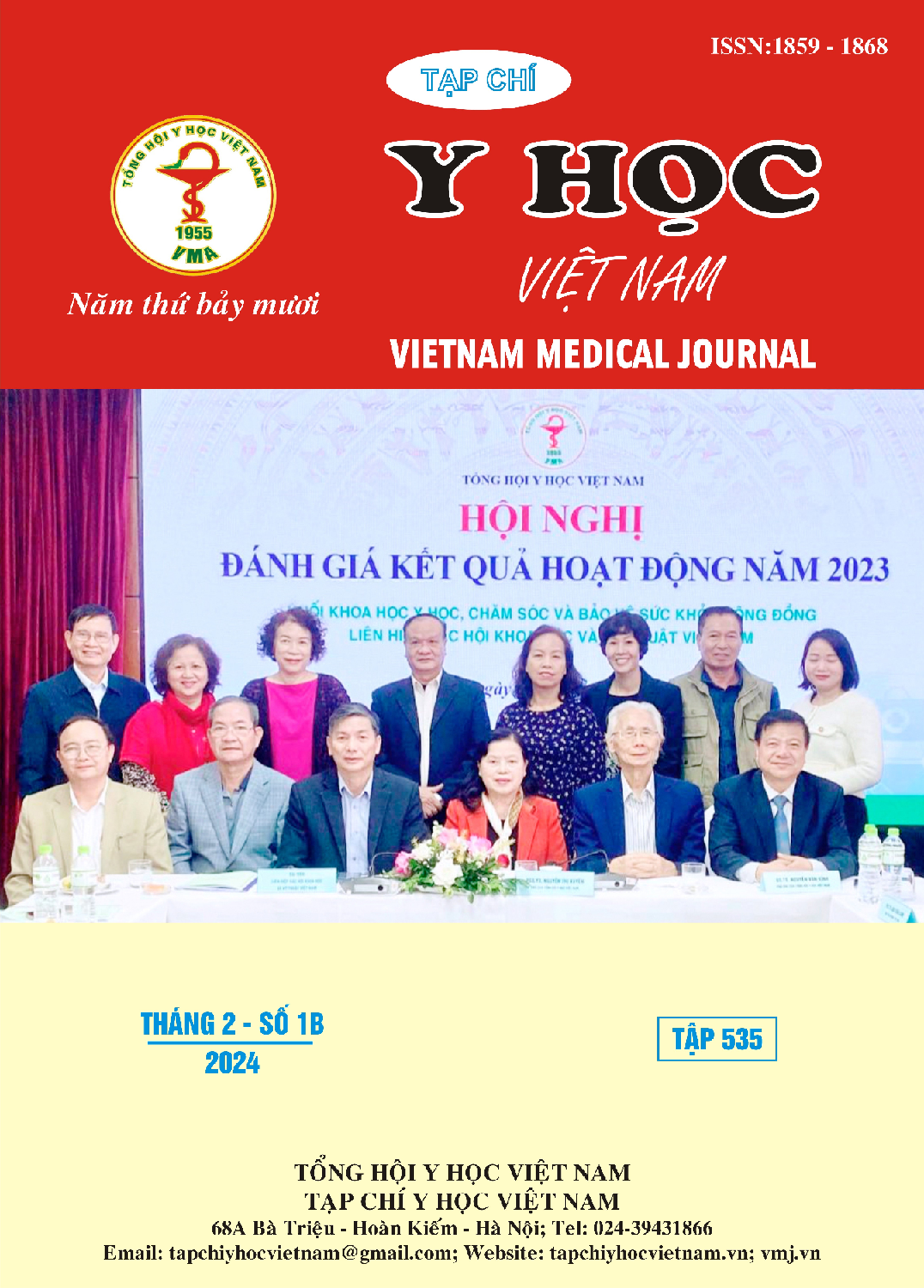RESULTS OF THE OPERATION FOR PARTIAL ATRIOVENTRICULAR SEPTAL DEFECT AT THE HEART INSTITUTE, HO CHI MINH CITY
Main Article Content
Abstract
Background: the operation for partial atrioventricular septal defect is the standard procedure for atrial septal defect and atrioventricular (AV) valve regurgitation. The aim of our study is to evaluate the results of this procedure at the Heart Institute. We focus on the impact of severe atrioventricular valve regurgitation and pulmonary hypertension on patients’ outcome. Methods: Retrospective, series cases study in patients undergoing the operation partial atrioventricular septal defect at the Heart Institute from 01/2009 to 6/2019. Preoperative, intraoperative, early postoperative one year and five year after operation data were collected from patients’ records. The degree of AV valve regurgitation and pulmonary artery pressure was noted before and immediately after the operation, one year and at five year follow-up visit. Outcome events include 30-day death, early postoperative complications and survival. Cardiopulmonary bypass time, cross-clamp time, mechanical ventilation time, duration of ICU stay and hospitalisation stay were collected. Results: There were 126 patients, 73 (57.9%) of whom were male. Median age was 3 year (min 3 month; max 16 years). 85 patients (67.5%) had severe AV valve regurgitation, 100 patients (79.4%) had severe pulmonary hypertension before operation. 3 patients died during the first 30 days (mortality 2.4%), 3 of them died from severe pulmonary hypertension, heart failure. One year, five year after operation had decrease of AV valve regurgitation, right ventricular diameter, pulmonary artery pressure, mortality 2.4%. Conclusion: In our study, severe pulmonary hypertension, heart failure was a major cause of 30-day mortality. Severe AV valve regurgitation after the operation. AV valve repair is still a challenge for cardiac surgeons. Severe AV valve regurgitation had negative impact on patients’ outcome.
Article Details
Keywords
Partial atrioventricular septal defect; Atrioventricular valve regurgitation.
References
2. El-Najdawi EK, Driscoll DJ, Puga FJ, et al. (2000). "Operation for partial atrioventricular septal defect: a forty-year review". J Thorac Cardiovasc Surg, 119 (5), pp. 880-9; discussion 889-90.
3. Devlin PJ, Backer CL, Eltayeb O, et al. (2016). "Repair of Partial Atrioventricular Septal Defect: Age and Outcomes". Ann Thorac Surg, 102 (1), pp. 170-7.
4. Mery CM, Zea-Vera R, Chacon-Portillo MA, et al. (2019). "Contemporary results after repair of partial and transitional atrioventricular septal defects". J Thorac Cardiovasc Surg, 157 (3), pp. 1117-1127.e4.
5. Waqar T, Riaz MU, Shuaib M (2017). "Surgical repair of partial atrioventricular septal defect". Pak J Med Sci, 33 (2), pp. 285-289.
6. Bowman JL, Dearani JA, Burkhart HM, et al. (2014). "Should repair of partial atrioventricular septal defect be delayed until later in childhood?". Am J Cardiol, 114 (3), pp. 463-7.
7. Al-Hay AA, Lincoln CR, Shore DF, et al. (2004). "The left atrioventricular valve in partial atrioventricular septal defect: management strategy and surgical outcome". Eur J Cardiothorac Surg, 26 (4), pp. 754-61.
8. Chowdhury UK, Airan B, Malhotra A, et al. (2009). "Specific issues after surgical repair of partial atrioventricular septal defect: actuarial survival, freedom from reoperation, fate of the left atrioventricular valve, prevalence of left ventricular outflow tract obstruction, and other events". J Thorac Cardiovasc Surg, 137 (3), pp. 548-555 e2.


